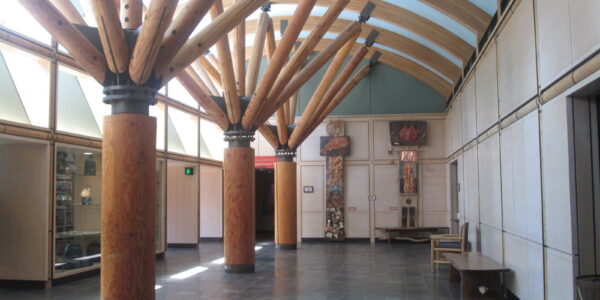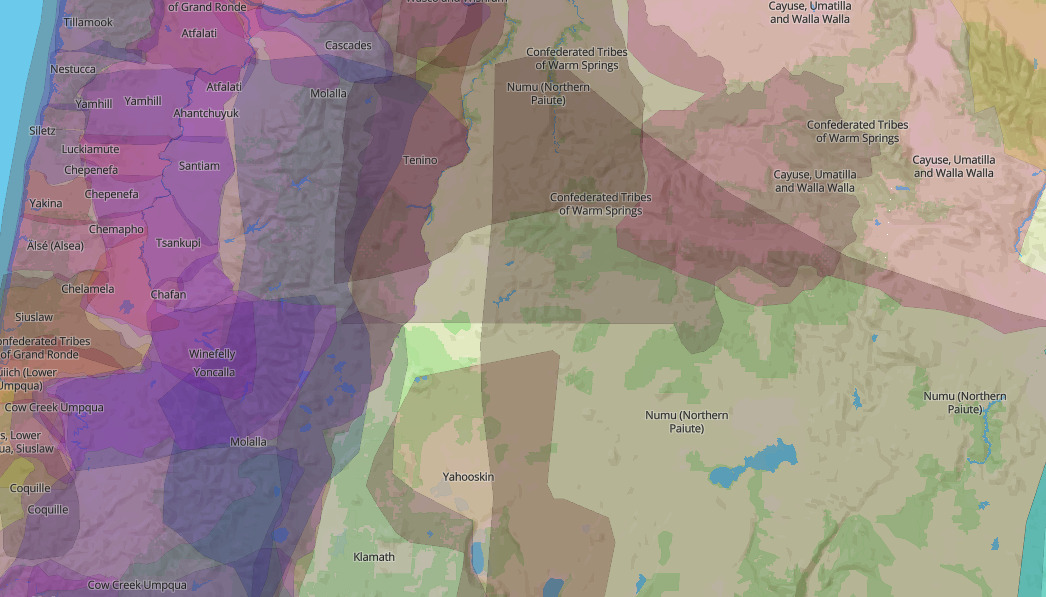Land Acknowledgement
The Environmental Center is on the traditional land of the Northern Paiute, the Wasco, and the Warm Springs tribes, known as The Confederated Tribes of the Warm Springs Indian Reservation of Oregon. These tribes also had interactions with other surrounding tribes - including but not limited to the Klamath, Modoc, Yahuskin, Santiam, and the Molalla.
We recognize and respect Indigenous Peoples as the original stewards of this land where we live, work, recreate, and learn. Our facility, garden, and programs exist on stolen land. We are guests with our tribal neighbors making homes and legacies in these spaces together.
Many values, ideas, and resources The Environmental Center shares are rooted in Indigenous ways of life. When we call on our community to protect the planet and her people, we acknowledge that this interconnectedness has been delicately sustained by Indigenous People since the beginning of time.
Throughout history and today, our Indigenous neighbors are most impacted by social and environmental injustices, reminding us that work is still to be done. We will continue to learn from and build relationships with tribal communities who have a profound understanding of climate change and how to care for forests, deserts, waterways, wildlife, and people. We commit to uplifting, celebrating, and including Indigenous voices as we deliver programs, events and advocate for a sustainable future.
Land acknowledgement is a new practice for The Environmental Center, and a way for us to express gratitude to the people who came before us and the land that sustains us, to start dialogue, and to encourage ongoing education and action. When it's both appropriate and meaningful, our staff may choose to share some version of The Environmental Center's land acknowledgement at the beginning of an event or program.
The Environmental Center's land acknowledgement was developed in partnership with local Indigenous community leaders and elders who were compensated for their time and expertise. We are grateful to each of them for sharing their history and stories.
Learn the History and Truth
The Warm Springs Reservation was created in 1855 after the Wasco and Warm Springs tribes ceded ten million acres of land to the Federal Government to use and develop over time in an effort to prevent war, retain some access to their homelands, and to prevent their complete genocide and dislocation as had happened to tribes east of Central Oregon. The Northern Paiute band was later forced to the Reservation in the 1880s.
Many treaties have since been broken, changed, or unrecognized in the name of development, progress, and supposed rights of settlers to Indian land.

Learn more history from these two websites:
Photo from the Museum at Warm Springs;
Open Tuesday - Saturday, 9 am - 5 pm.
It’s our practice to deliver a land acknowledgement alongside a call to action that supports or uplifts the Indigenous community.
We encourage you to take time to learn about the history where you live, whose land you’re on, and how colonialism is perpetuated today. If you’re not living in Central Oregon, you can find out more about the land you live on here.
There are many ways to learn about and support our tribal communities in present-day Central Oregon. Here are a few ideas for action:
- Visit warmsprings-nsn.gov.
- Take a trip to the Museum at Warm Springs.
- Check out the Warm Springs Community Action Team, dedicated to helping people build financial independence and small businesses in Warm Springs. Make a donation.
- Support local Indigenous-owned businesses. For example, Sakari Farms.
- Support Indigenous-owned food and agriculture by checking out the Pacific Northwest Tribal Agriculture Guide.
- Support local Indigenous artists. Shop at the store Tananáwit in Warm Springs for Indigenous-made art and products, or donate to their artist collective in support of their work.
- Read, listen to, and watch media created by Indigenous people. For example, purchase or borrow Legends of the Northern Paiute as told by Wilson Wewa; and listen to Native American flute music by James Edmund Greeley.
- Support the Helpers by volunteering or making a donation.
- Donate to the Chúush Fund to directly benefit the Confederated Tribes of Warm Springs as they work to restore their access and infrastructure for clean water.
- Donate to the CRÍID Foundation, whose mission to preserve, share and advance Columbia River Indian customs and culture.
- Help Native American students achieve their academic goals by donating to the First Nations Student Union Scholarship.
